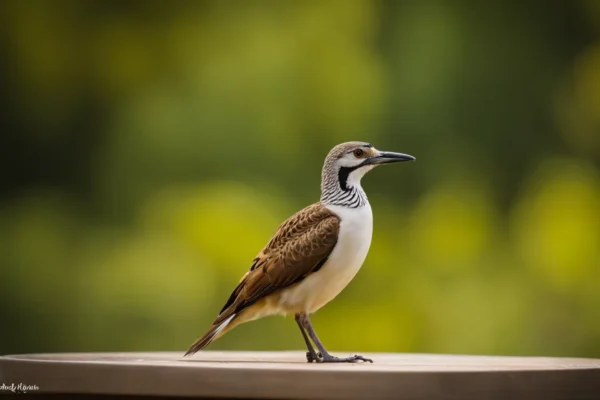Over the past few months, while many of us were confined within our own countries, European bee-eaters (scientifically known as Merops apiaster) have been getting ready for their annual migration towards the south. The interesting part is that, unlike humans, these birds don’t face any issues with international borders. As they finish their breeding season, they are about to embark on a challenging journey to the southern regions, where they’ll reach just in time for spring.
Let’s explore some fascinating facts about these small travelers:
Identifying European bee-eaters:
Recognizing European birds can be a bit tricky due to various shades of browns and greys. However, European bee-eaters stand out effortlessly with their distinctive features and vibrant feathers. These birds are one of the most colorful among all bee-eater species. You can spot them by their slim body, bright yellow throat, crown with rusty hues, turquoise underparts, and yellowish backs. The vivid colors create a stark contrast with their striking black beaks and eye bands that resemble masks.
Males and female European bee-eaters may be hard to distinguish from one another due to their lack of sexual dimorphism. The upperparts of females are somewhat more greenish than yellow. For increased sexual appeal, breeding birds tend to be brighter than non-breeding ones. Additionally, the immature birds have a duller appearance than the breeding adults.
The Migration and Distribution of European Bee-Eaters
The geographic range of European bee-eaters is wide, and there are variations in the migratory patterns amongst various populations.
Parts of Asia and Southern Europe are breeding grounds for the Palaearctic migrants. Around the latter part of July, as the breeding season comes to a close, they start migrating south, escaping the very cold winters in the North for the balmy summers of Southern Africa. They return to Europe in April, just before the next mating season, when the Southern Hemisphere begins to chill.
In the meanwhile, the migrants from inside Africa breed in Central and Northern Africa before moving south to enjoy the magnificent summers in South Africa. As winter draws near in the South, they too go north. Since they have limited breeding populations established in South Africa, some resident groups choose not to participate in the migration at all.

The Odd Diet of Birds That Eat Bees
As their name implies, these insectivores’ favorite food source is bees. However, they also like wasps, flying ants, dragonflies, and butterflies!
I’m sure you’re wondering how they stay out of the sting. What animal, after all, consumes bees? They also have a rather unique style of hunting. From a high perch, they swoop down and seize their victim midair. The bug is then continuously thrashed against a branch or rubbed against a twig as it flies back to its perch until the sting is gone. Indigestible components might also be regurgitated by them as pellets.
Constructed to Kill
European bee-eaters are highly suited to their lifestyle, much as all other bee-catcher birds. Their large, curved beaks are ideal for tightly gripping prey since they are sharp. For perching on trees and other vertical surfaces where they dig tunnels, they have keen claws.
They have keen vision, which is essential for accuracy while capturing insects since they are insect eaters. Additionally, they are swift-moving birds that can hunt at a high speed. Their aerodynamic design and broad, slightly pointed wings make them ideal for long-distance flying.
Where Do Bee-Eaters Across Europe Live?
They usually build their nests in rural areas, meadows, forests, and sometimes on farms, next to rivers. They are found in the grasslands, shrublands, forests, and savannahs of Africa. Arid or semi-arid habitats are common places for European bee-eaters to reside.
Were you aware?
In certain regions, agricultural areas with bee colonies used for pollination are frequented by European bee-eaters.
Social Behavior and Nesting
Excavated burrows found along cliff edges, sandbanks, and riverbanks are home to European bee-eater nests. A burrow might take up to twenty days to finish. These sociable birds construct their nests in couples or colonies, and they often assist one another in doing so.
When foraging, the cry of European bee-eaters may resemble a chorus of “preeps.” In colonies, they are usually more talkative. They use calls, much like any other bird, to find and interact with one another. The call becomes more melodious during courting.
Conception
Birds that consume bees are monogamous throughout Europe. Couples stay together for the whole of their lives. Their lifespan is six years. Elaborate courting rituals include a variety of vocal and aerial displays, as well as certain dance-like motions when perched, signal the start of the breeding season.
The guy enters through the symphony of color and music and gives the female presents of food. Up to 10 eggs are laid by the female, and both birds incubate them. Additionally, the altricial chicks hatch blind and naked following a twenty-day incubation period. Fortunately, the mother bird has lots of assistance since her partner and other colony members often assist with feeding and caring for the baby. That woman is very fortunate.
Intruders, Hunters, and Invaders
The European bee-eater is not known to face any serious threats. However, there are still predators around. Raptors like the black kite (Milvus migrans) have the potential to kill them, while snakes and other reptiles often assault their nests.
Because they dig for their nests, European bee-eaters are vulnerable to parasites. They must thus often preen, bathe, and clean themselves. They take dust baths as well.
The European Bee-Eaters’ Ecological Role
Not only can these stunning near passerine birds brighten our lives with their presence, but they also serve as vital ecosystem engineers, particularly in dry areas.
It is possible for them to remove up to twelve kilos of dirt during nest-burrowing efforts. Because it modifies the surroundings for other species, this bioturbation has a significant impact on the ecosystem. It provides other species with access to nutrients from the removed soil. Other species often exploit abandoned burrows for refuge, roosting, and breeding.
Final Thoughts
To be sure, we have learned a great deal about these lovely birds. Bee-eaters have been referenced in myth and folklore throughout history. They were also often persecuted.
We now recognize their worth and the part they play in the natural world. And we applaud them as they travel the world and go on with their life cycle.




![When To Put Out A Hummingbird Feeder [Detailed Guide]](https://birdsology.com/wp-content/uploads/2024/01/15522.webp-600x400.webp)


One thought on “European Bee-Eater (Merops apiaster): 10 Interesting Facts”